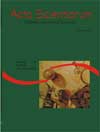Property conception in Thomas More’s Utopia
Abstract
Thomas More’s work called Utopia, published in 1516, became a paradigm for the formulations of utopian social projects. In that work More retook a controversial theme to Western political philosophy and religiosity: the idea of a just society. He examined the possibilities of constructing this kind of society and its fundamentals. The theme of property and how this concept is understood in that work is the special focus of in this text. Utopia presents a kind of collectivism in the manner of Plato’s Republic. The collectivism of the Utopia island was characterized by the criticism of the nascent form of capitalist property and because of this it became a classic of political philosophy, but the feasibility of this collectivism and its fundamentals remain questionable. Utopia contains some problems such as slavery, which demonstrates that despite being a criticism of the society of that time it keeps a close relationship with its way of thinking. Would Utopia just be a counterexample of that society and More just another reactionary?Downloads
Download data is not yet available.
Published
2008-07-02
How to Cite
Arnaut de Toledo, C. de A., & Silva, R. E. L. e. (2008). Property conception in Thomas More’s Utopia. Acta Scientiarum. Human and Social Sciences, 22, 235-246. https://doi.org/10.4025/actascihumansoc.v22i0.4168
Issue
Section
Social Sciences
DECLARATION OF ORIGINALITY AND COPYRIGHTS
I Declare that current article is original and has not been submitted for publication, in part or in whole, to any other national or international journal.
The copyrights belong exclusively to the authors. Published content is licensed under Creative Commons Attribution 4.0 (CC BY 4.0) guidelines, which allows sharing (copy and distribution of the material in any medium or format) and adaptation (remix, transform, and build upon the material) for any purpose, even commercially, under the terms of attribution.
Read this link for further information on how to use CC BY 4.0 properly.























